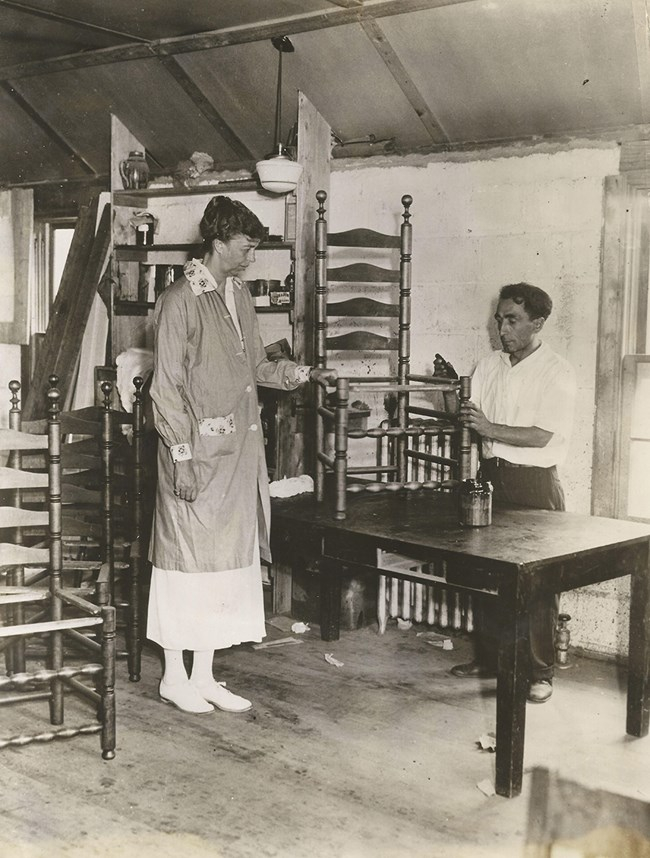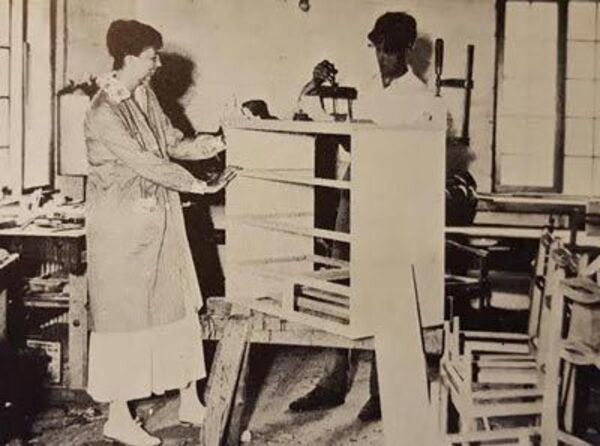Elanor established the Lav-Kill industries in 1927
By 1927, when Eleanor Roosevelt and three friends—Nancy Cook, Marion Dickerman, and Caroline O'Day—joined forces to form Val-Kill Industries, the American Arts and Crafts Movement was in decline. She and her business partners funded the construction of a small factory to provide additional income for local farming families who make furniture, pewter, and homespun cloth using traditional craft methods. Most Val-Kill products were modeled on 18th-century forms in order to capitalize on the design movement known as Colonial Revival at the time. Disappointed by the movement's inherent inability to effect change in an industrial society, some supporters redirected their energy, drawing national attention to the craft traditions of America's colonial past.
Val-Kill Industries was influenced by both the Arts and Crafts and the Colonial Revival movements. These movements shared a love of simplicity and honesty in design and materials, nostalgia for a pre-industrial past, and an emphasis on agrarian values.
Eleanor Roosevelt would see Val-Kill Industries in a broader context over the course of its 10-year existence. She was instrumental in incorporating Arts and Crafts ideas and ideals into larger government-sponsored initiatives that adopted many of the movement's philosophical attitudes toward craft, labor, and human dignity. Val-Kill Industries and Eleanor Roosevelt achieved success where the Arts and Crafts movement had failed. Val-Kill Industries served as a model for some New Deal economic recovery programs when Franklin D. Roosevelt became President. Though Val-Kill Industries did not achieve the success Roosevelt had hoped for, it did pave the way for larger New Deal initiatives during her husband's presidency.










